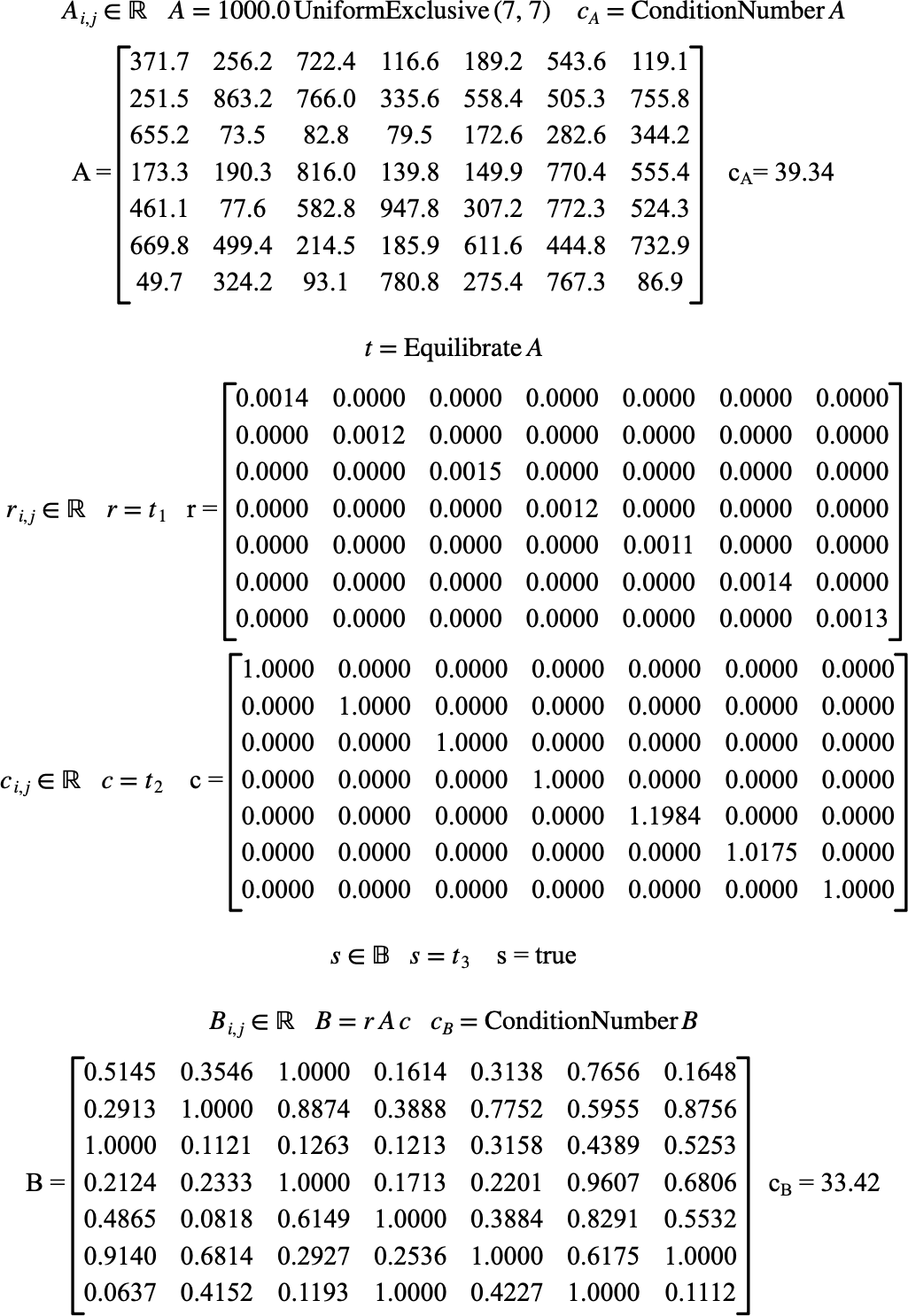\(\text{Equilibrate}\)¶
You can use the \(\text{Equilibrate}\) to calculate scale factors to apply to a matrix that will minimize the condition number of a matrix. The function rescale row and column values to minimize the condition number of a matrix. The function will rescale row and column values such that the largest absolute value of any value in a row and column is 1.
You can use the \equilibrate backslash command to insert this function.
The following variants of this function are available:
\(\text{tuple } \text{Equilibrate} \left ( \text{<matrix>} \right )\)
The \(\text{Equilibrate}\) function returns a tuple containing:
A diagonal matrix containing the row scale factors to be applied to reduce the condition number.
A diagnonal matrix containing the column scale factors to be applied to reduce the condition number.
A boolean value holding
trueif the operation was successful.
You can calculate the rescaled or equilibrated matrix by simply multiplying the incoming \(\text{<matrix>}\) by the calculated row and column matricies.
Figure 128 shows the basic use of the \(\text{Equilibrate}\) function.

Figure 128 Example Use Of The Equilibrate Function¶
